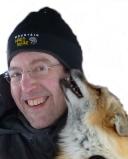Animal Behavior
The Well-Connected Animal
Social networks and the wondrous complexity of animal societies.
Posted May 20, 2024 Reviewed by Monica Vilhauer
Key points
- Social networks permeate the animal kingdom.
- Social networks affect what animals eat, how they protect themselves, who they mate with and more.
- Social networks stand as a tribute to the complexity, depth, and wonder of life in animal societies.
I want to introduce you to networks that permeate the natural world: the social networks formed between nonhuman animals. These networks stand as a tribute to the complexity, depth, and wonder of life in animal societies. In my new University of Chicago Press book, The Well-Connected Animal: Social Networks and the Wondrous Complexity of Animal Societies, I show how.
Researchers have come to discover that being embedded in social networks plays a critical role in almost every aspect of animal life: what they eat, how they protect themselves, who they mate with, the dynamics of parent-offspring relations, power struggles, navigation, communication, play, cooperation, culture, and more.
Take the case of social networks in the long-tailed manakin (Chiroxiphia linearis) that David McDonald has studied in the tropical montane forests of Monteverde, Costa Rica. If you haven't seen the courtship ritual of these birds, you don't know what you have been missing: it's a song-and-dance routine that would be the envy of any Broadway choreographer. Clusters of long-tailed manakin males—in their red, blue, and black plumage—spend their time in areas with perches, from which they perform their routines to entice females into mating.
Outside of the breeding season in April and May, any male in a cluster can practice singing and dancing—and they do. During the breeding season, any male is free to sing and dance in a perch zone—as long as there are no females around. When females are about, only the two highest-ranking males in a group—the alpha and beta males—can sing and dance at a perch. All other males are chased away by the performing pair. Then the alpha and beta male put on their show.
It begins when the alpha male emits a "teeamoo" call that attracts the beta male to the area. Then, from up in the canopy, the pair begins a bout of well-synchronized, coordinated singing, producing a call that strikes the human ear—at least the ear of English speakers—as the word toledo (toe-lee-doe). After toledo calls attract a female, the males descend to a common perch about six feet above the forest floor.
Once on the perch, the coordinated dancing begins, with an occasional call directed at females to make sure they are paying attention; though it is hard to imagine a female paying attention to much else. While facing the female, males begin bouts of hops, leapfrogging over one another. The male closest to the female flies straight up about two feet, with its wings flapping at an eye-popping speed. The other male then slides toward the female as the bird in flight lands behind its leapfrogging partner. Males alternate these roles, and a bout of hopping can involve up to 200 leapfrogging displays.
As the leapfrogging continues, the alpha male will sometimes emit "buzz-weent" calls toward the beta male. The leapfrogging then speeds up, and the alpha male may give off a "weent" call, lacking the "buzz", which causes the beta male to end his dance. The alpha male then makes a solo flight where he circles over the perch, with the female watching. Mating between the alpha male and the female often takes place after that.
McDonald’s study site contained many perch zones, and each had its own resident pair of alpha and beta males. But most males across the study site, even most older males, were not alphas or betas. McDonald wanted to know who landed those coveted roles. The first piece of that puzzle came when he learned that manakins are long-lived. Most species of small birds aren’t, with many living just three or four years. Manakins are an exception, weighing just half an ounce.
The average age of a male manakin who mates is ten years old: it takes a long eight years to reach the status of beta, and even longer to become an alpha male. An alpha-beta partnership can take many years to form, but once it does, a pair often remains together for many more years. That really matters, because synchronization improves as the pair stays together, and the more synchronized the song-and-dance routine of a pair of alpha and beta males, the more females visit their perch; and the more females visiting a perch, the more matings at that perch. Almost all matings go to the alpha male, who can mate with dozens of females in a breeding season. The beta male’s apprentice role eventually reaps rewards after he inherits the perch zone, and all the benefits associated with it, when the older alpha dies or can no longer dominate him.
Long life and the deep social bonds that form along the way, thought McDonald, seemed to be at the heart of who ended up as alpha and beta males. But how did it work? He was certain that what the young males did mattered when it came to achieving alpha or beta rank later in life, but even after studying the birds for more than fifteen years, he didn’t have the theoretical tools to piece it all together. That changed when McDonald was scanning articles in journals like Nature and Science, where he read about how sociologists were using social network analysis to study the dynamics of complex human societies. McDonald thought that might just provide him with the tool he needed to understand life on the manakin perches.
As he read more and more, McDonald began to understand the way in which social network analysis works, mapping direct and indirect links between members of a group, following the flow of information between members, describing how well-integrated a group of individuals is, and discerning who the central players driving a network are. He knew that with the average age of a successfully breeding male being about ten years, a male would have had many other male associates during his formative years from ages one to six. Using nearly 10,000 hours of data he had gathered, McDonald looked at how many other males an individual was associating with during his formative years, as well as how many bonds those associates had formed with others around them. Then he constructed social networks to see if he could detect patterns in which males ended up as successful duet singers.
What McDonald discovered was that males most deeply embedded in their social network when young were the ones defending perches and performing duets later in life. Recall that although each perch zone has only two males performing duets for females, lots of other males are hanging out in a zone, practicing their performances when no females are nearby. McDonald found that networks that formed between ages one to six, when males were moving about between perch zones filled with other males, were the key predictor of which males would become alphas and betas about five years later. The greater a male’s connectivity with other males in his social network during those early years, the more likely he’d rise to the status of dueter, often with a friend (the male he was most connected to) or with a friend of a friend: every additional unit of connectivity in the social network increased a male’s chances of reaching alpha or beta status five-fold.
During their formative years, males were building contacts, creating and solidifying their role in a social network in ways that paid off many years later.
References
Dugatkin, L.A. (2024) The Well-Connected Animal: Social Networks and the Wondrous Complexity of Animal Societies. Chicago: University of Chicago Press. Some of the above text is modified from this book, with permission from The University of Chicago Press.
McDonald, D.B. 2007. Predicting Fate from Early Connectivity in a Social Network. Proceedings of the National Academy of Sciences 104: 10910–14.
McDonald, D.B. 2009. Young-Boy Networks without Kin Clusters in a Lek-Mating Manakin,” Behavioral Ecology and Sociobiology 63: 1029–34.
Epic Lance-tailed Manakin Dance and Display Sequence with Female, April 15, 2017; Cornell Lab Web Cams, https://www.youtube.com/watch?v=6V9FZSDmR1U&t=11s




